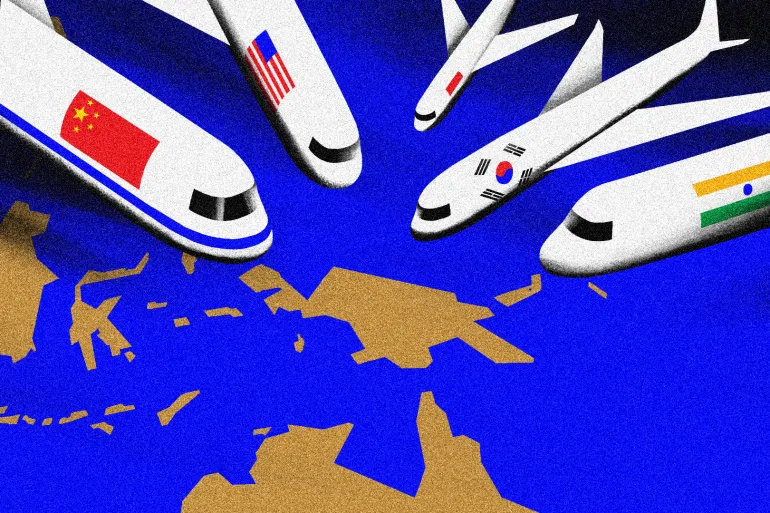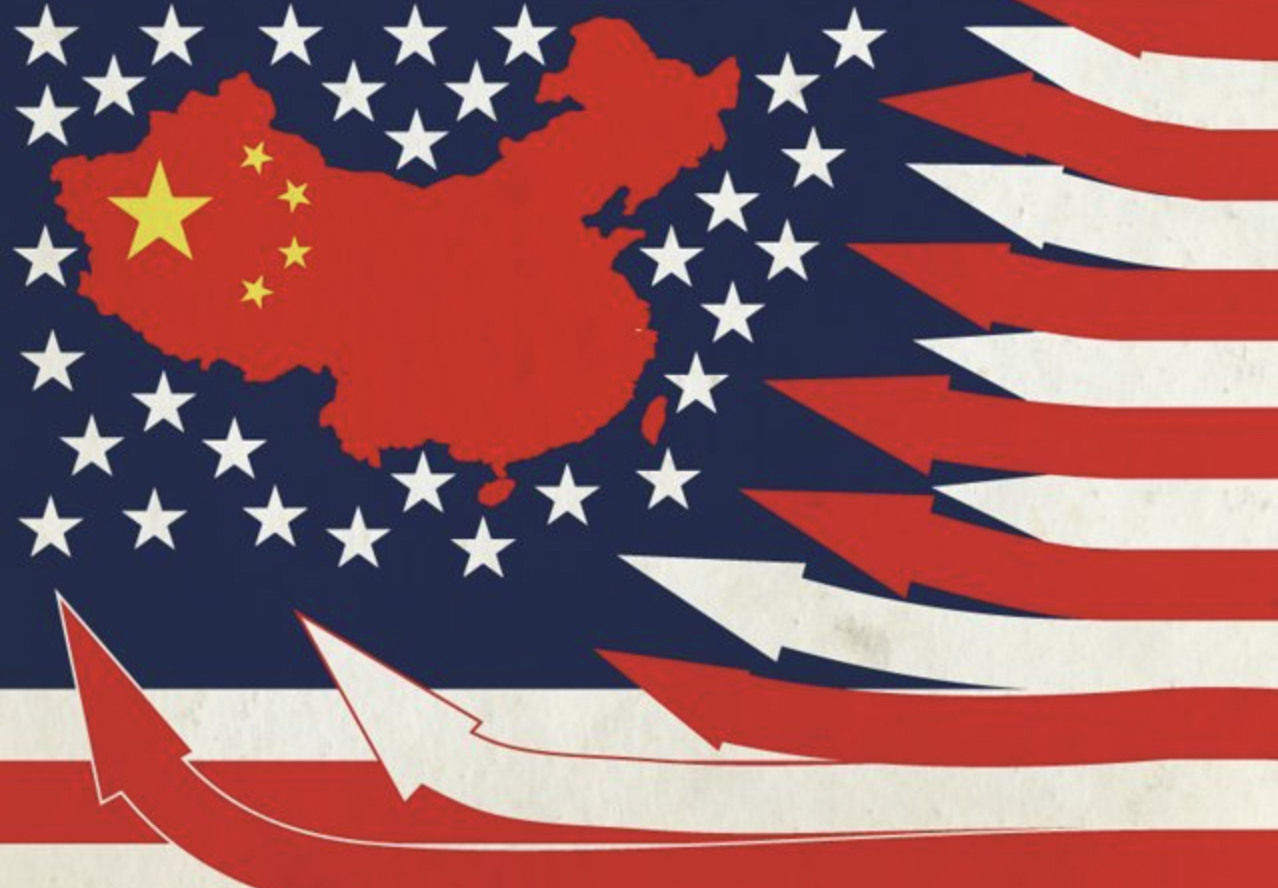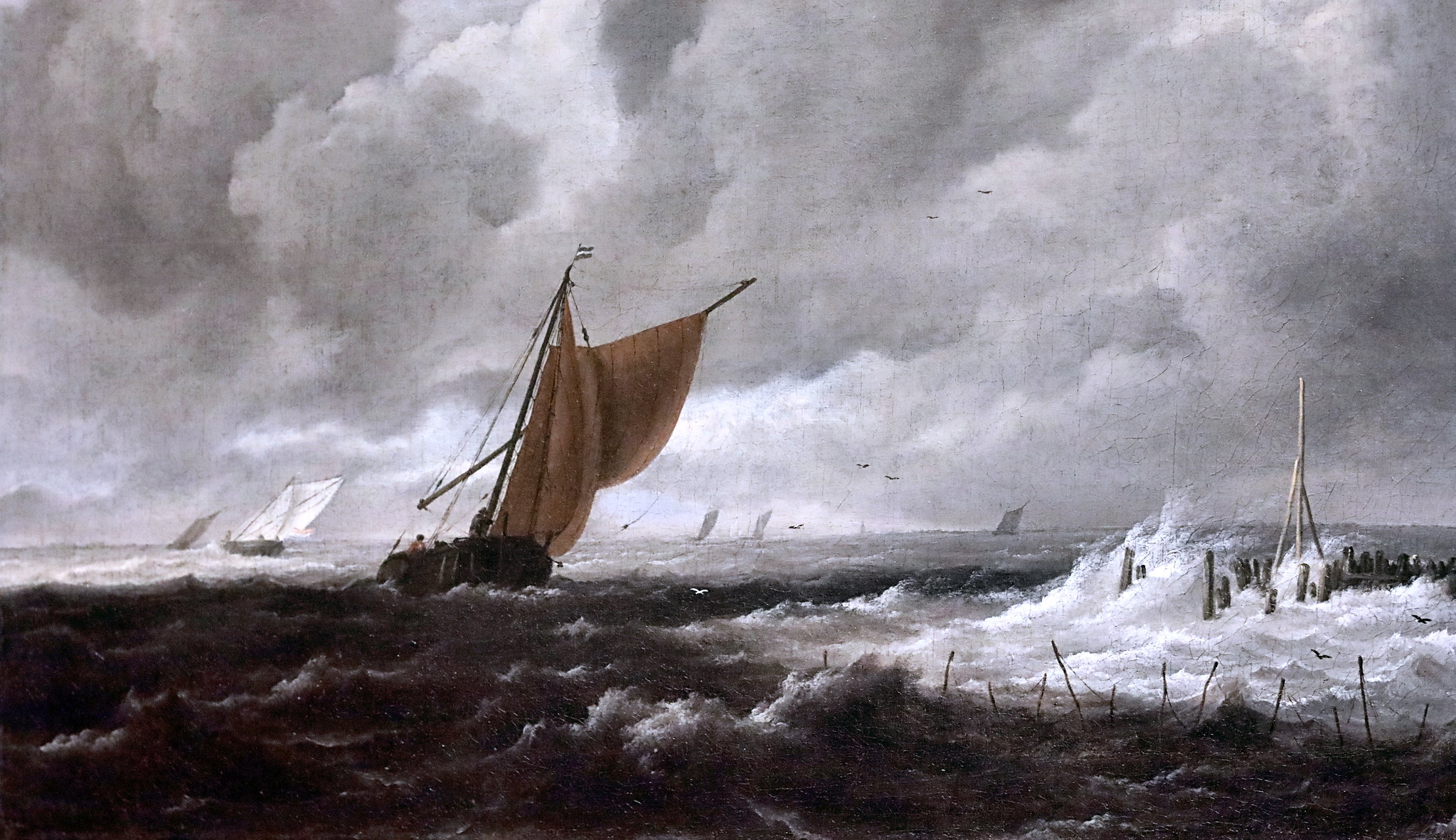Middle-Power Agency in an Indo-Pacific Era
GLOBAL ASIA
APLN member Cheng-Chwee Kuik co-wrote an article with Paul Evans and lay out the intellectual and foreign-policy challenges around the Indo-Pacific as a term to describe what is emerging in the region amid the growing geopolitical rivalry between the US and China. The original article can be found on the Global Asia website here.
IN LESS THAN a decade, the idea of an Indo-Pacific region has moved from obscurity to center stage in regional affairs. While lacking in geographic precision and a common text, it has been the title adopted in something like 15 national strategies and by several international organizations including the European Union, G7 and NATO. For many analysts and policymakers, it is the successor to the equally amorphous, though long-lived, concept of the Asia-Pacific constructed in the late 1980s and employed as the label for hundreds of initiatives and institutions since.
A shifting regional discourse reflects a changing reality but is also shaping it. If the Asia-Pacific was an institution and identity-building instrument put in place at the end of one cold war, the Indo-Pacific has more than a whiff of being constructed on the verge of a second.
The two terms symbolize substantially different conceptions of the ambitions and structure of a regional order. But it is not as if the Asia-Pacific flag is being symbolically lowered across the region and the Indo-Pacific one hoisted to replace it, though in some places and situations that is happening. There remain firm Asia-Pacific loyalists as well as those who are happy to be flexible in flying both flags depending on the circumstances.
Those so far most likely to embrace the Indo-Pacific are usually allies and partners closely connected to the United States. Many in Asia and the wider Global South see “Asia-Pacific versus Indo-Pacific” less as a matter of “two orders” than competing narratives and networks of groupings, mechanisms and arrangements.
What differentiates the Asia-Pacific from the Indo-Pacific frame? What does each tell us about labeling and semantics as well as the balance of influence? And what, in particular, is the role of middle powers in navigating, nurturing and shaping a regional order at a liminal moment?
ASIA-PACIFIC VS. INDO-PACIFIC
In its starkest form, the Asia-Pacific emerged as an aspiration in the late 1980s for a new regional framework built on the principles of market economics and free trade, open regionalism, inclusive multilateralism, co-operative and comprehensive security, and the engagement of China. It eschewed drawing lines on the basis of political regimes and, at its boldest, envisioned an Asia-Pacific community that would transcend or at least mitigate national rivalries.
Of course, the Asia-Pacific was never fully realized. In economic terms there were all kinds of obstacles to its neo-liberal economic aspirations. Visions of a free-trade area for the Asia-Pacific never materialized. Regional security was underpinned by American military superiority and a hub-and-spoke style alliance system.
But it did conform with a long peace and take form in multiple institutions, chief among them the Association of Southeast Asian Nations (ASEAN), and with middle-power leadership and great-power accord on full display.
The Indo-Pacific, in contrast, is a construction promoted most strongly by Japan and the US and a range of other countries in what they see as a new strategic setting defined by a deepening competition between the US and China, increasing anxiety about Chinese intentions and rising influence, a skepticism about open markets and free trade in a fragmenting global economy, and a belief that regional economic integration is as much a source of vulnerability and risk as it is opportunity.
Indo-Pacific strategies run across a spectrum of views, not all of which align fully with the views articulated in the US Indo-Pacific statement but all of which share the assessment that the regional situation is becoming more dangerous, that co-ordinated actions are required to limit growing Chinese influence and that new institutional arrangements are needed.
Some key ideas have animated each conception.
Emblematic of the Asia-Pacific: comprehensive and co-operative security, confidence and trust building measures, consensus, embrace of the non-like-minded, engagement of China, middle-power leadership; open regionalism, globalization, free trade; inclusive multilateralism, the Regional Comprehensive Economic Partnership (RCEP), the Comprehensive and Progressive Agreement for Trans-Pacific Partnership (CPTPP), the fleet of ASEAN-anchored institutions including APT, EAS, ADMM-Plus, ASEM and the ARF, the Asia-Pacific Economic Cooperation (APEC) forum and a range of track-two dialogues.
Emblematic of the Indo-Pacific: deterrence, democracy vs. authoritarianism, shared values, security over market efficiency, a lattice-work of alliances and partnerships, US leadership and definition of a rules based international order; balanced trade; supply chain resilience; friend-shoring; near-shoring; decoupling, de-risking and diversifying; industrial policies, subsidies, small yards and high fences in selected areas of advanced technology transfers; interdependence and integration as vulnerabilities and tools of weaponization (by both the US and China); dual circulation; the Indo-Pacific Economic Framework, and prioritization of mini-laterals including the Quadrilateral Security Dialogue (Quad), AUKUS, and the new US-Japan-South Korea summit process over reform of existing multilateral institutions.
It is misleading to exaggerate the differences. Indo-Pacific thinking does not aim to fully replace Asia-Pacific thinking but rather to supplement and potentially eclipse it. ASEAN centrality is not being jettisoned but redefined to keep the appreciation of its institutions and convening power while diluting or abandoning some of its core norms. While almost every Indo-Pacific strategy identifies China as a threat, the nature of the threat ranges from existential and systemic competitor through to disruptor and challenger. Mini-laterals have long been championed by many countries for specific purposes including the several maritime Southeast Asian countries in the Malacca Straits Patrol and the Trilateral Cooperative Arrangement in the Sulu-Celebes Seas and loose arrangements such as MITKA, connecting Mexico, Indonesia, Turkey, South Korea and Australia.
US military dominance and role as security guarantor remains intact but is shifting from hub-and-spoke alliances to a new “latticework of alliances and partnerships” explicitly focused on restricting Beijing’s power projection prospects while using mini-lateral forums such as AUKUS and the Quad to work with allies and partners in new forms of burden sharing.
All countries project some level of state involvement in the economy, and all recognize national security as ultimately pre-eminent over economic growth. And even under an Indo-Pacific banner, countries differ considerably in their positioning on competition in advanced technologies and semiconductors. Virtually all are apprehensive about the US movement into America First industrial subsidies, tighter market entry restrictions and political dysfunction.
Beneath this are structural changes. If the Asia-Pacific rested on unilateral American dominance, an optimistic view about the prospects of convergence around a Western-defined system and middle power leadership, the Indo-Pacific rests on a new foundation of dynamic multipolarity, deep anxiety about the future of US-China relations and great power assertiveness.
MUST MIDDLE POWERS CHOOSE?
While the term “middle power” is frequently used, there is no consensus on exactly what it means or who it includes. Positionality, with some institutionalized ideas and functions, is one defining feature. In the Indo-Pacific era it means being caught in the middle of a loosely bipolar world characterized by a high level of tension between the US and China. Regional countries all harbor deep concerns about the downward spiral of relations between China and the US. At the same time, they must deal with each of them simultaneously and effectively.
A narrower subset, highlighted in this issue of Global Asia, is defined by countries having initiatives about advancing system-wide improvements beyond their immediate self-interest, a commitment to building institutions and not just solving specific problems, the capacity to work with others to get things done, and the ability to work across differences in political systems and values.
So what does that middle-power maneuvering look like at a time when, in the words of one American observer, “the time for choosing has arrived. Countries will have to decide whether to side, or appear to side, with Washington or Beijing.”1
This common either/or narrative is mistaken as Evelyn Goh argues in her essay. It functions as a combination of myth, wishful thinking, and pressure tactic for middle states to take sides. It posits a false and dangerous binary when the large majority of Asian states strive to resist that fateful choice and instead see a spectrum of arrangements that involve, and in some cases transcend, the US and China.
Caught in the middle between two great powers and a shifting regional order, middle states do face choices, but they also have agency and options. There is flexibility to engage cooperatively with multiple partners simultaneously across defense, economic development and diplomatic domains based on a convergence of interests and needs. At this micro level, most middle states have chosen to continue partnering with both Washington and Beijing in a selective and limited manner, choosing on the basis of their own interests rather than external pressure.
Some countries often described as middle powers — Canada, Australia, New Zealand, Japan and South Korea — have lined up closely with the US in support of a rules based international order based on shared values and common geopolitical fears. But as the essays in this volume on Japan and South Korea argue, the overlap with Washington’s perspective is only partial and is domestically contested.
Other Asian states and the vast majority in the wider Global South are embracing some form of hedging, neutrality, non-alignment or multi-alignment. In Southeast Asia, in particular, virtually all states have opted to partner with both the US and China as well as others. In trade, they simultaneously engage with China’s Belt and Road Initiative (BRI), America’s IPEF, as well as the 15-member RCEP that also includes China, Japan, South Korea, Australia and New Zealand. Five are members of the CPTPP. In defense, the core ASEAN states have maintained and strengthened their longstanding military ties with the US and other Western powers, while forging nascent but multifaceted security co-operation with China (including bilateral and mini-lateral military exercises) and exploring new ones with Japan, South Korea, India, and individual European powers.
Their preferred order is inclusive, multilayered and multipolar, with no single predominant power. It is embodied in ASEAN itself and ASEAN-led mechanisms. The 18-member East Asia Summit (EAS) and the ASEAN Defense Ministers’ Meeting-Plus (ADMM-Plus) are the only multilateral institutions that include all the competing powers and key players in the Indo-Pacific region. These and other small-state-led forums such as the 27-member ASEAN Regional Forum (ARF) and the 13-member ASEAN Plus Three (APT) form the backbone of a multilayered dialogue. Their overlapping structures may appear fragmented, but these institutional features serve to multiply co-operation, maximize benefits and mitigate uncertainties.
MIDDLE-POWER OPTIONS
All states have a measure of agency; some are more effective at exerting and exercising it by actively proposing their own ideas and promoting initiatives independently or through collective action. The essays here pay special attention to Japan, South Korea, Malaysia, Indonesia, Australia and one extra-regional country, Germany, plus ASEAN itself. Whatever the type of government, alignment with the US or China, they look for ways to increase their independence and to maximize their own national interests.
One set of issues revolves around the present and future roles of ASEAN. Despite being composed of member states with significantly different alignments with each of the great powers, ASEAN remains the exemplar of concentric-circle multi-alignment. How and why does it use the vocabulary of the Indo-Pacific while remaining faithful to the norms, principles and practices, of the Asia-Pacific? How far can the inclusiveness principle be altered to allow an ASEAN-X formulation for dealing with contested issues such as the situation in Myanmar. Even as ASEAN is ineffective in handling sovereignty-related issues, it is indispensable in mitigating intra-ASEAN problems and providing platforms for mitigating big-power competition.
Several Southeast Asian countries are benefiting from the American policies of de-risking and diversifying beyond China that are stimulating an inflow of investment and relocation of production into the region. But as Jeff Reeves and Shiro Armstrong note in their essays, the benefits may be short term by reducing overall economic efficiency and productivity. They may also deepen dependence on China, which will continue to be central to regional production and consumption networks.
On trade matters, how do these countries stay true to the principles of free and open trade and global connectivity in the face of forces in both the US and China favoring techno-nationalism and the securitization and weaponization of trade? How attractive is Washington’s plan for the Indo-Pacific Economic Framework as compared to either China’s BRI and related initiatives or globalization and the rules-based multilateral trading system? Will “small yards and high fences” devolve into complete decoupling in an ever-widening list of sensitive sectors? How far should China be targeted by, and excluded from, regional trade arrangements based on the structure of its economy or geopolitical considerations?
If the Indo-Pacific becomes the dominant regional discourse, how far can Asia-Pacific ideals and practices be built into it, as Indonesia, in particular, but also Japan and South Korea are attempting to do? Do Washington’s “lattice work” treaty allies and partners have special leverage in leavening American threat perceptions and policies and “shaping them from within,” as Ryo Sahashi suggests? How should regional middle powers view proposals for a larger role for NATO in the region or the creation of an equivalent treaty organization for Asia?
Harkening back to the golden era of inclusive regional dialogues at the governmental and track-two levels on non-traditional security, David Capie asks some penetrating questions in his essay. Where is the leadership for resuscitating them now? In particular, how can they address the ever more urgent matters of non-traditional security related to climate, pandemics and biodiversity? How, as Helen Nesadurai asks, is it possible to de-conflict and harmonize standards and practices related to ethical regulation of supply chains? How can they be used to revisit the idea of a rules based international order and find common ground on what those rules might be? How to find ways to establish and sustain dialogue involving the US and China together and separately on both a regional and global basis?
Running through many of these essays is the debate about whether common or universal values around democracy and human rights as understood in the West should be a key driver of regional alignments and institutions. In Europe and North America, the idea plays well. It is a topic of considerable debate in Japan, South Korea, Australia and New Zealand. In the remainder of Asia and the Global South, these essays all make clear that the idea is sharply resisted.
CONCLUSION
It is premature to write the obituary for the Asia-Pacific or treat its proponents as writing postcards from a bygone era.
An era becomes an order when its opponents accept its terms as defining the available policy space. At the moment, as is evident in these essays, that moment has not been reached in a region that for the foreseeable future will be an Asia-Pacific/Indo-Pacific hybrid.
Realists are correct that the transition from the Asia-Pacific to the Indo-Pacific is never likely to be complete because the one major country excluded and targeted, China, is too powerful to disappear, even if it is not powerful enough or attractive enough to create an alternative hegemony. And many others, centered in Southeast Asia, have too much invested in the Asia-Pacific vision to easily walk away from it. Embracing the Indo-Pacific design would be the end of ASEAN centrality, even if it would not presage the death of ASEAN itself.
The middle-power adherents of what Chung-in Moon calls “transcending diplomacy” and Evelyn Goh calls “competing strategic imaginaries” are not finished yet. The Asia-Pacific flag isn’t being lowered, and the triumph of confrontational geopolitics is not destiny.
*Middle Power Agency in an Indo-Pacific Era, organized by UBC-IKMAS-EAIR-KAS, Kuala Lumpur, July 11-13, 2023.




